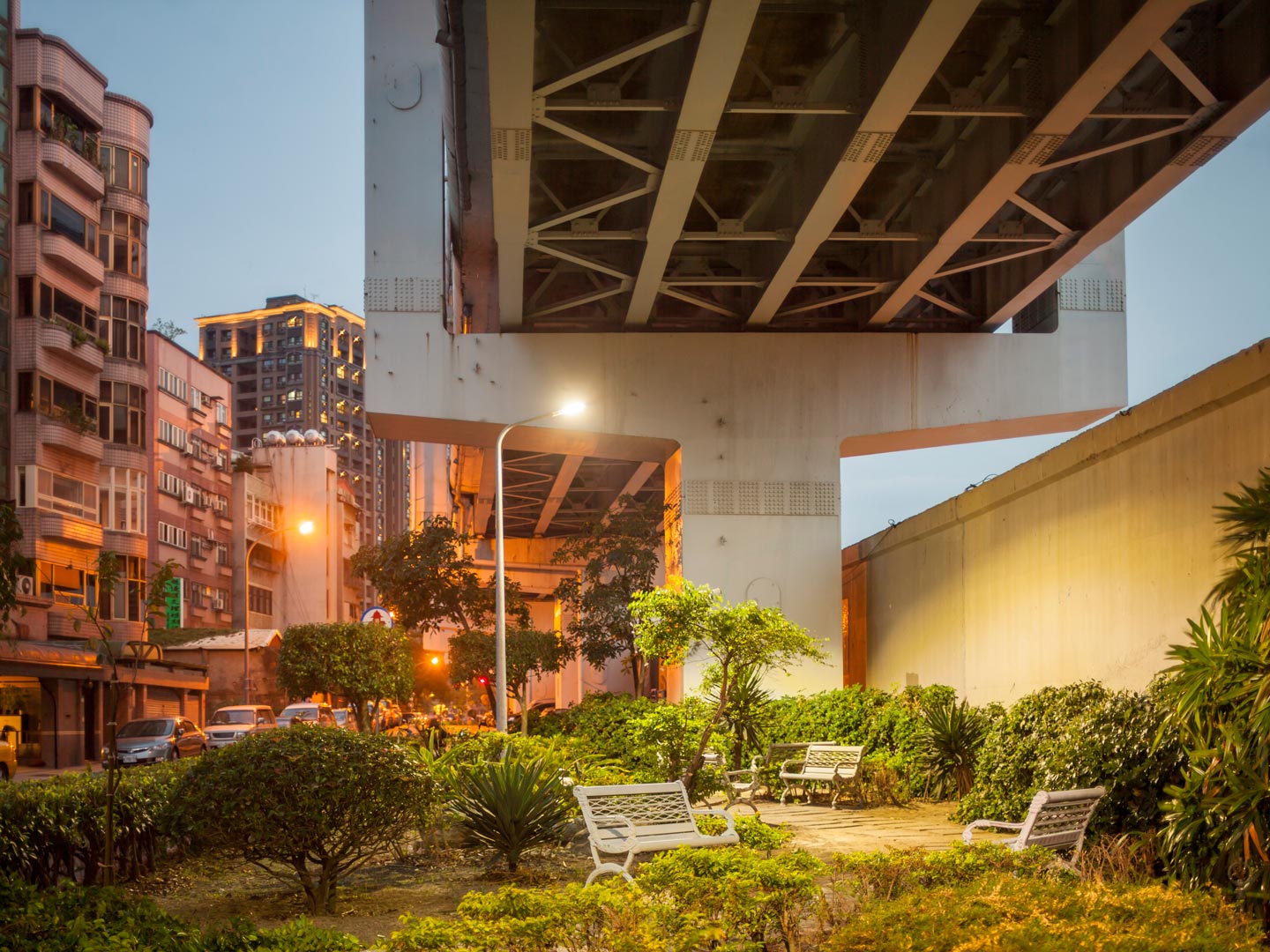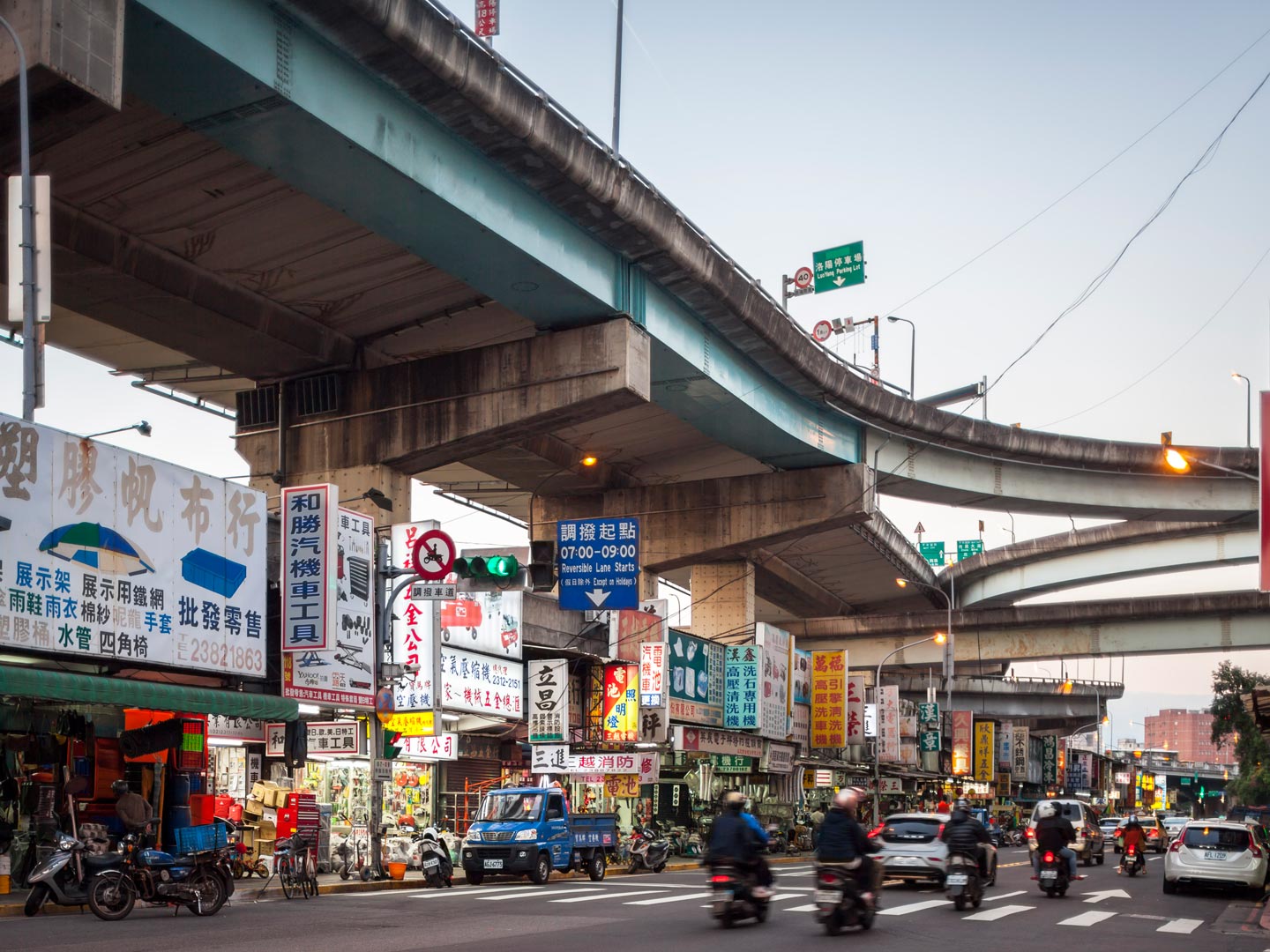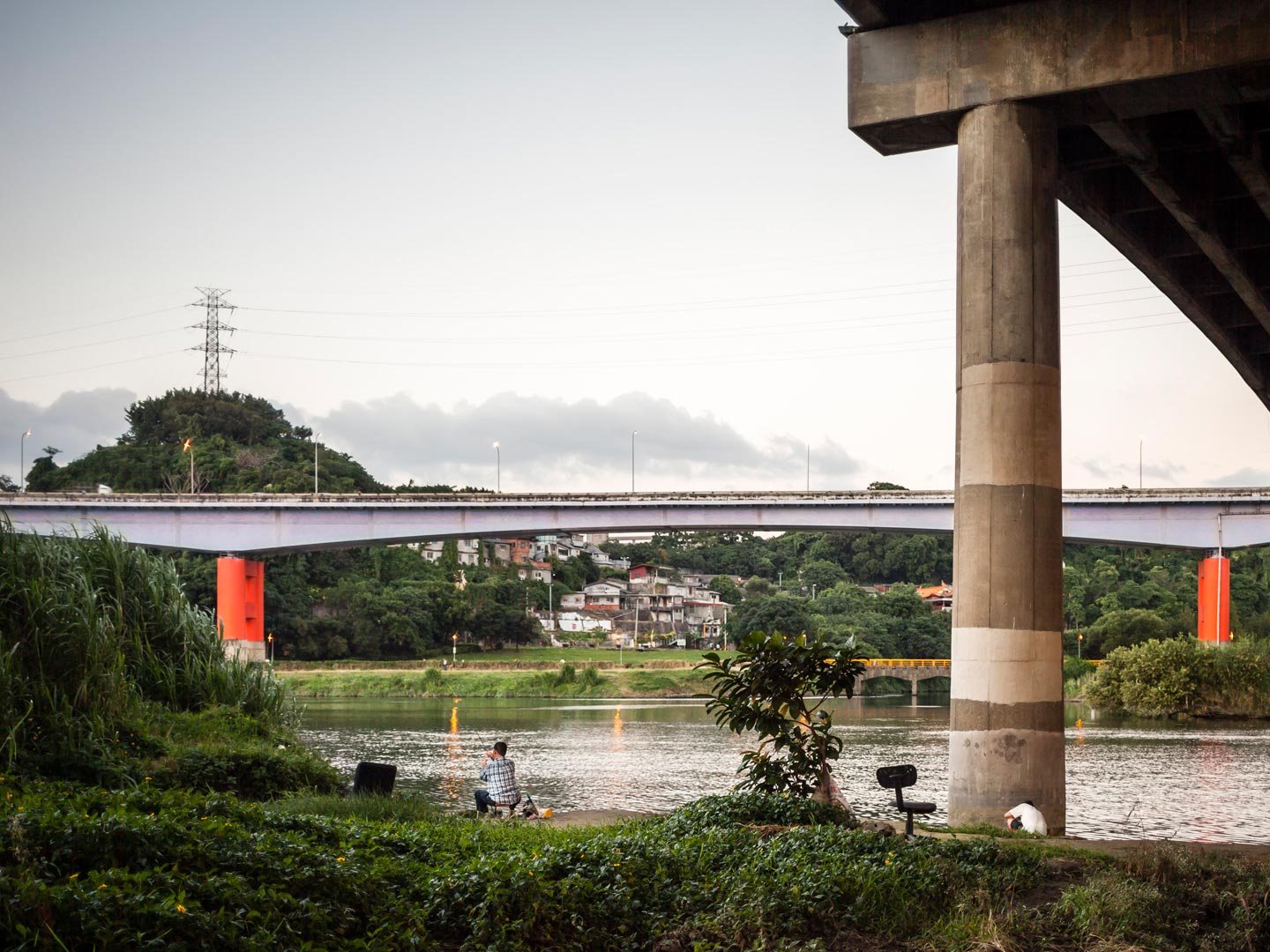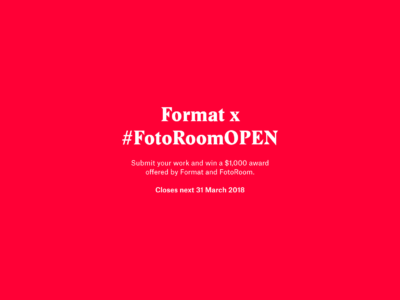Meet Éanna de Fréine, Photographer, Publisher and Juror of Our ‘Human Environments’ Call















As is demonstrated by his latest photobook Tales from Beneath the Arches—a collection of photos of elevated highways and expressways in Taiwan—Éanna de Fréine has a strong interest in the habitats men build for themselves in the 21st century, and how (dys)functional they actually are for human beings. This is why we immediately thought of him as the juror of our new open call Human Environments. The winning entry in the Series category might become a photobook published by The Velvet Cell, an indie publishing house founded by Éanna in 2011; as an added bonus, Éanna is offering FotoRoom’s Pro members a 15% discount on all The Velvet Cell books (including special and signed editions), starting today until next 16 April—just use the FOTOROOM code at checkout to claim your discount.
Hello Éanna, thank you for joining us as the juror of our Human Environments open call! How did you become passionate about photobooks? What is it about photography books that makes you tick?
I don’t have a simple answer for this question. I suppose first and foremost I am passionate about images and their ability to provoke emotions and feelings inside us, in much the same way that good music or a good story would. There’s something about certain photographs that just speaks to me, but I can’t pin down what it is and why it does that for me.
I believe photography books are simply the most natural way to experience photography, especially photographic projects. I get uncomfortable in a gallery, having to look at photographs while standing up, with other people around you: you don’t have the privacy you often need to really experience the images. With a book, you can. A photobook truly presents a work as a full project, using the book format to tell the story the photographer wants to share.
The best photobooks do this naturally. They seduce us, lure us in and keep us coming back; and each time we return to them our experience is a little bit different depending on what mood we are in, or what page we open. Photobooks bring photography to the masses, and not just to those collectors who can afford to buy prints.
Why is it important for a photographer to have their work published in book form?
As I mentioned before, the book is the optimal way to present a project. I suppose, however, this really depends on the work itself and if it is intended to be made into a book; but it’s safe to say that most projects are, especially those of a documentary nature.
The book transforms the project and the ideas underlying it into a tangible object that you can share. I think that’s what we all want deep down: to share our photographs and experience them with others.
Tell us a bit about The Velvet Cell. When and how did you decide to start publishing photobooks?
I began publishing in 2011 because I was finding myself more and more coming across images that spoke to me in some way. I would see a photograph and it would provoke something inside me—an emotion, a sensation, a vision—that I didn’t really know was there. Such images encapsulated a view that was forming within myself about the world we currently inhabit.
But too often these photographs were only found online, on sites like Flickr. They were not tangible. There is a world of difference between seeing a picture on a screen and seeing it in print, for whatever reason. The problem was I could not find enough photobooks on the market that satiated me. There were amazing ones by photographers like Peter Bialobrzeski and Michael Wolf that inspired me and proved there were others out there with similar interests as mine; but ultimately, I always felt lacking. So I decided to create my own platform to share works that matched my interests about the modern world we’re creating and what’s our place in it. I did it for myself as much as for others.
Indeed, human environments—the world we’ve built for ourselves—is a central theme in the publications released by The Velvet Cell. What in particular about human environments interests you, and where does your curiosity for this theme come from?
While studying Sociology and History at university—back then I had never even considered using a camera for anything else than family portraits or holiday snaps—I came to the realization that our world is very much a social construction based on our beliefs about what represents right and wrong, fair and unfair, progress and regression.
I think it is overwhelmingly easy to take our current world for granted. We belong to this time and age; we know no other. Linking larger cities with the idea of progress is a legacy of the Industrial Revolution, but are cities really our natural habitat? Are they really functional for humans, or do they alienate us from our true selves instead?
I also find it fascinating that, for the first time ever, we are in complete control of our habitats and environments, including the natural elements within them. Rivers may still run through our cities, but there is not an inch of them that can’t be controlled by humans. The trees, parks and plants found in urban settlements are all part of a design: none of it is natural. When I step out of my front door in Osaka I cannot see a single tree. I live in a concrete world. People come to live in Osaka to improve their lives, and maybe they’ll actually do better from a financial point of view. But do cities really serve our other needs? More than ever before we are part of a completely artificial world that is supposed to represent the optimum way of living. But does it really?
This fascination with the city initially led to greater fascination about our present state and the modern world we live in. If we can take a step back for a second, I think we would be amazed at what is before our eyes.
You have generously offered to transform the winning entry in the Series category of our ‘Human Environments’ call into a photobook, if it fits The Velvet Cell’s editorial mission. Can you briefly describe the typical process through which a TVC book is made?
Making a book is wonderful thing. Typically it begins in much the same way an architect designs a house, trying to find a fit between content and form: each one depends on and informs the other. I believe in having a shared role with the photographer in the creation of the book, which means we discuss together everything (format, editing, sequencing, etc.). This is the part I enjoy the most—feeding off each other’s visions for the work and collaborating to create something great!
Usually the photographer and I will begin by nailing down the message of the book: what is its purpose and concept? The answer will strongly influence the book format we choose and the images to be selected for the following stage, the final edit: which photographs tell our story in the most effective way possible? This doesn’t mean that all images should be equally powerful, but they should all serve the purpose of delivering our message.
Next comes sequencing. With sequencing, there’s not one right answer but there are many wrong ones, as will soon become clear once you start putting the images together. It’s important to keep in mind that at the end of the day creating a sequence is very subjective, and that not everyone will read your images—or even see them—in the same way you do. You have to be willing to let that ambiguity into your work.
Then there’s designing the book—getting the files ready for proofing before going to print. All The Velvet Cell books are printed in Taiwan (where I used to live) and then shipped to our warehouse in the UK. From there, they are shipped to customers worldwide.
Should the photographers who would like to enter the ‘Human Environments’ call be discouraged by the fact that they are expected to cover the financing of producing the book?
Photographers are not necessarily expected to cover the costs directly with their own money, but finding sources to finance the production of the book will be their responsibility. The Velvet Cell will take care of everything else: designing, proofing, printing, storage, marketing and distribution. In any case, I always help the photographers find the necessary funds, for example by writing recommendation letters on their behalf to art organizations.
My strongest desire is to help photographers tell their stories collaboratively: I want to publish with them. At The Velvet Cell, we don’t want to be the only ones to profit from a book. We always try to give back. We offer all our skills and experience, and a return on sales from the book. If a photographer does well we do well, and vice versa. It’s a win-win.
Unfortunately, since for photobooks there’s not an advertising model as for magazines, it is unlikely that the vast majority of photobooks will become profitable in the near future. But this is to focus purely on the negative sides of photobook publishing: photobooks are hugely important, and probably the best way to share work and initiate conversations. In my opinion, they should not be seen as an end result, but rather a vehicle for dissemination. I know if I had to choose between creating a book that hundred or even thousands of people could see, or a two-week exhibition in a gallery, I would go with the book purely for its ability to present my project in its entirety and reach so many people for such a longer time.
Photographers can also enter the ‘Human Environments’ call in the Single Image category. What do you consider a compelling single photograph?
I am mostly invested in photography projects. That is where my passion is because a project embodies the photographer’s desire and perseverance to present a story.
A single image on the other hand has the ability to be powerful in that it can tell a story that has no beginning or ending. Looking at a single image, we are left to wonder and imagine what happened before and after the captured moment. Full projects tend to offer those answers, or at least suggest them; a single image can give a singular, but memorable, experience.
What do you wish to see from the works that will be submitted to the ‘Human Environments’ call?
I don’t want to influence those who will participate, but I look forward to how different people interpret the ‘Human Environments’ theme. I am always pleased when someone can show me something new and change my way of thinking about a certain topic.
Choose your #threewordsforphotography.
Observation. Interpretation. Construction.
Are you a FotoRoom’s Pro member? Éanna de Fréine is offering you a 15% discount on all The Velvet Cell books (including special and signed editions), starting today until next 16 April—just use the FOTOROOM code at checkout to claim your discount.
Keep looking...

FotoCal — Photography Awards, Grants and Open Calls Closing in May 2025

FotoCal — Photography Awards, Grants and Open Calls Closing in April 2025

FotoCal — Photography Awards, Grants and Open Calls Closing in March 2025

FotoCal — Photography Awards, Grants and Open Calls Closing in February 2025

FotoCal — Photography Awards, Grants and Open Calls Closing in January 2025

FotoCal — Photography Awards, Grants and Open Calls Closing in December 2024

FotoCal — Photography Awards, Grants and Open Calls Closing in November 2024




